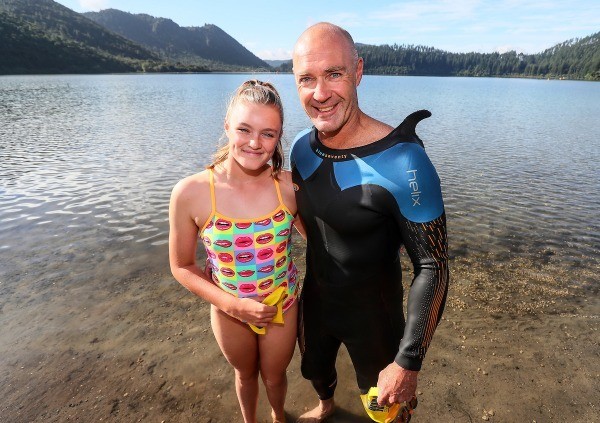Wetsuit vs. Non-Wetsuit Swimming

by Andrew Mackay
While wetsuits are not essential, the majority of swimmers do use them as they do provide a huge benefit by providing buoyancy in the water. Swimming specific wetsuits are quite different to surf wetsuits so if you are going to use one, but don’t own one, I would sooner hire a swimming wetsuit than purchase a surf wetsuit.
Make sure you try the suit for sizing first and remember there are multiple levels of wetsuits to suit swimmers abilities and budget.
If you choose to do the event without a wetsuit and have had little open water experience, or haven’t familiarised yourself with the water temperature for your expected duration of time to complete the swim, then I would recommend doing this before you take on the swim.
There are many areas of the stroke that you may need to adjust, and I am just going to touch on a few key ones when comparing Wetsuit vs Non Wetsuit Swimming.
Kick
Wetsuit – So many swimmers put on a wetsuit and then stop kicking – the kick places such a key part in balance, lift and propulsion of the stroke. Working on a nice even tempo 6 beat kick (3 kicks per arm stroke) will help control the lower half of your body, and can reduce the fish tailing effect of just removing your kick completely. Rarely do I see a non-elite swimmer successfully implement a two beat kick without it creating addition drag, hence my recommendations to work on a sustainable 6 beat kick. Learn more about kick technique
Non Wetsuit – without a wetsuit now your body position is generally lower in the water and you’ll have to work a bit harder to gain that position. So I believe the kick becomes even more important, especially in rougher conditions. Your kick will help you control position in the water and assist to provide more forward momentum as you go to breathe. Learn about breathing technique and breathing into the trough
Buoyancy – Body Position
Wetsuit – often very competent pool swimmers struggle to convert their successful pool swimming through to the open water. The main reason for this is the wetsuit often makes the swimmer over buoyant which often lifts their chest higher in the water, almost arching their back and therefore creating additional drag – so the tip for these swimmers is to feel like they are pushing their chest down to reduce that drag component and therefore controlling the wetsuit buoyancy rather than it controlling them.
Non-Wetsuit – understanding your posture in the water is important, try to create a high body position in a straight line behind your head. If you sense your hips or kick are low then try to relax and get your hips higher to reduce the drag component, and keep your kick relatively small as a big kick often creates drag and a lower body position in the water!
Core – Body Position
Wetsuit – because of the buoyancy of the wetsuit often a swimmer will disengage their core that they would normally use to stabilise their body position. This means the swimmer is easily displaced due to water movement or even their own arm stroke. So I’d often watch a swimmer with weak core posture take a higher number of strokes but not really get anywhere (please continue to read below). Learn more about Core Posture
Non Wetsuit – As mentioned with regards to body position the core is an important factor of this. Consider your arm entry like an anchor point and you then need to pull and then push your core up to where you are anchored. If your core is engaged it will pull forward effectively, if it is disengaged or there is weakness, the body collapses and the arm movement through the water adjusts to compensate for the direction that the body goes forward (a collapsed stroke).
Arm Recovery
Wetsuit – the challenge when you purchase a wetsuit is getting the best suit for you. Often a higher end suit offers more panels (which increase range of movement), lower gauge rubber on some of the panels (which stretch and move easily). So if you have purchase a cheaper level suit with a reduced numbers of panels or a thicker gauge of rubber then you may find that you are getting arm fatigue during the stroke especially during the arm recovery. During the arm recovery the resistance of the thicker rubber can mean you can’t lift your shoulder as high to help with reducing the drag component caused by a flat or low shoulder position. So you can resist fighting the lack of flexibility of some suits, so you won’t get as fatigued but you will most likely be increasing drag. Learn more about arm recovery
Non Wetsuit – Without a wetsuit on, there is no restrictions in your shoulder movement and the ability for you to move your arm through the recovery. This can often make swimming more enjoyable and less fatiguing for some swimmers as long as you are willing to compromise with the lower body position of non-wetsuit swimming.
This Swim Tip has been created by the experts at Boast Coaching
“Feel Relaxed, Set Up the day, Gain Confidence with Boost Coaching’s – Seven Secrets to Swimming Success”

